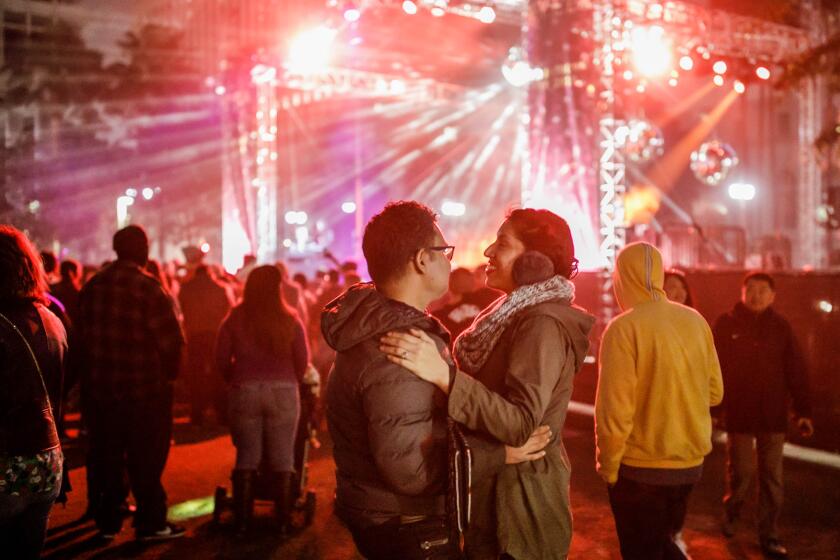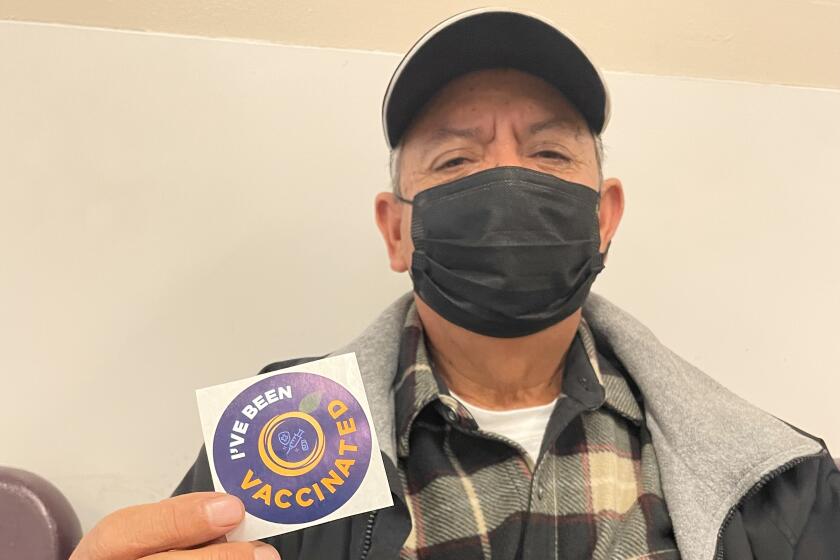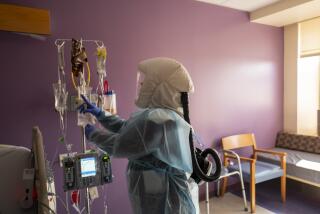L.A. COVID-19 cases skyrocket to 27,000 as health officials plead: âAct responsiblyâ
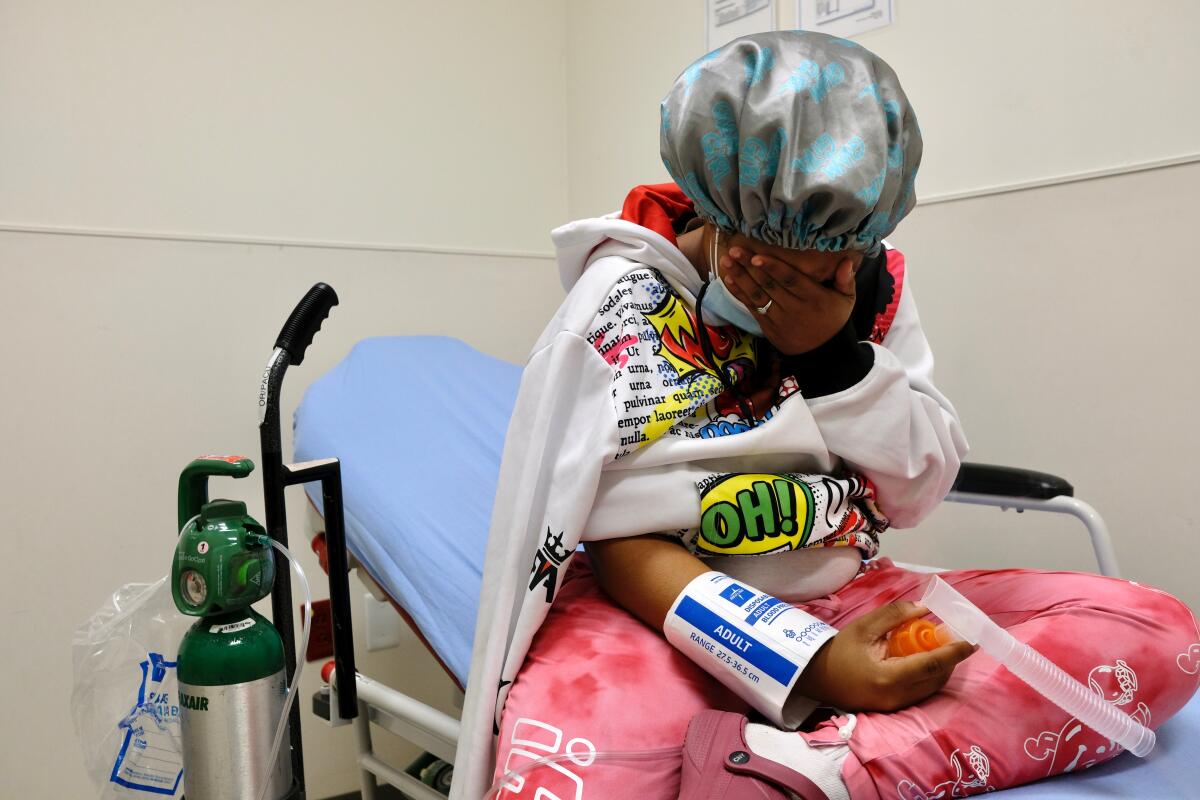
Los Angeles County reported another surge in coronavirus cases Friday, prompting health officials to urge residents to curtail large New Yearâs celebrations.
The county announced more than 27,000 new coronavirus cases on the final day of 2021. Roughly 1 in 4 people who have been tested over the past seven days are positive for a coronavirus infection, officials say.
New daily coronavirus cases have climbed steadily in recent days in L.A. County. On Tuesday, 9,473 cases were reported; Wednesday, 16,510; Thursday, 20,198; and Friday, 27,091. The positive test rate for the seven-day period that ended Friday was 22.4%, double what it was for the weekly period that ended on Christmas, when it was 11.4%.
The numbers underscore how the highly transmissible Omicron variant is spreading throughout Southern California with unprecedented speed.
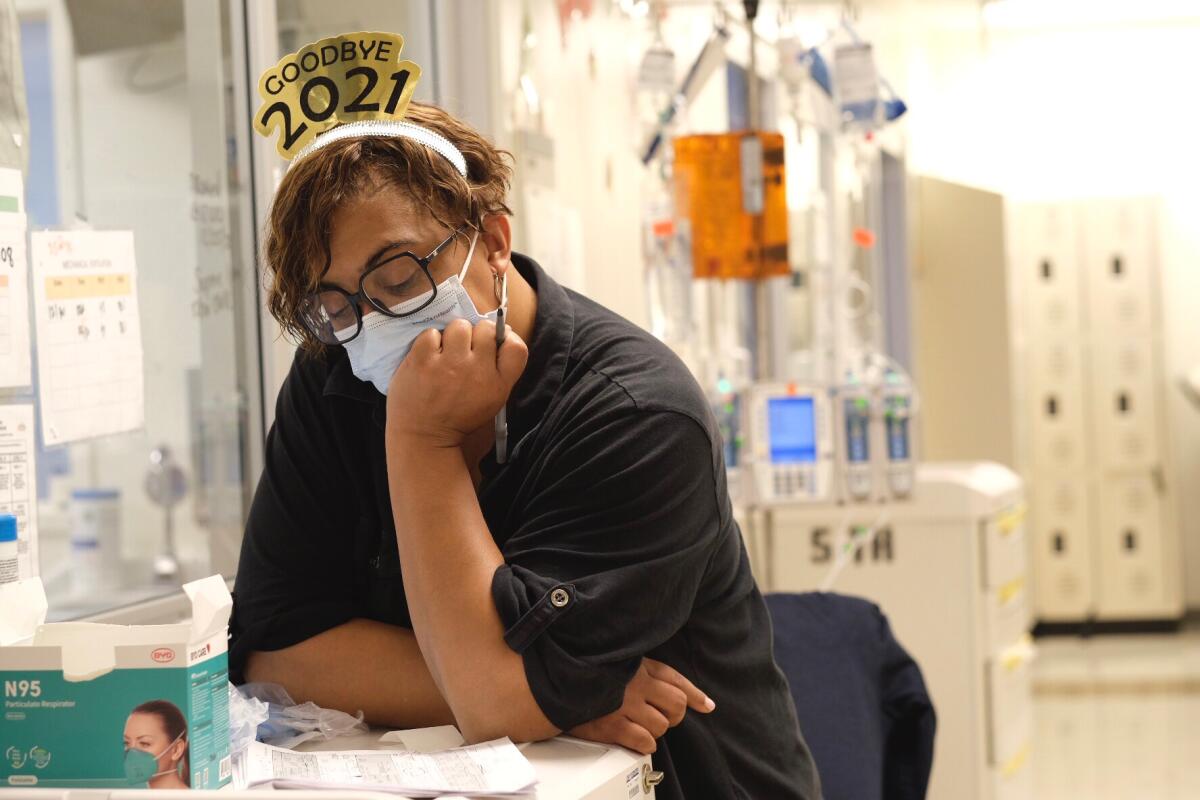
Californiaâs reported average daily coronavirus caseload has more than quadrupled in the last two weeks â pushing infection levels significantly higher than at any point during the summer surge.
âThe days ahead will be extraordinarily challenging for all of us as we face extraordinarily high case numbers reflecting widespread transmission of the virus,â Barbara Ferrer, L.A. Countyâs public health director, said in a statement Friday. âIn order to make sure that people are able to work and attend school, we all need to act responsibly.â
Ferrer said residents should avoid large gatherings, and should meet up only with people who are up-to-date with their COVID-19 vaccinations and boosters.
âTo celebrate safely, itâs best to keep gatherings very small. And when possible, please gather outside. For the lowest risk to yourself and others, limit your gatherings to those in your immediate social network who are fully vaccinated and boosted,â Ferrer said this week.
âPlease avoid large crowded events. Try to watch fireworks and other displays from a distance, where youâre not surrounded by others,â Ferrer said.
A sharp spike in COVID cases, fueled in part by the Omicron variant, prompts health experts to urge revelers to scale back New Yearâs Eve gatherings.
The risk of transmission is highest for people who are unvaccinated or have underlying health issues. For people who unvaccinated, are older, have serious underlying health conditions and compromised immune systems, âit is best this year to avoid entirely any crowded events,â Ferrer said.
On Friday, the California Department of Public Health announced a new order to require those at indoor events with 500 or more attendees to show proof of full vaccination or a recent negative test to enter. The order will go into effect Jan. 15. Currently, only indoor events with 1,000 or more attendees are subject to the requirement.
The state also announced a tightening of vaccination and testing requirements for people wanting to visit nursing home residents. Starting Jan. 7, visitors wanting to make indoor visits must be up to date on their COVID-19 vaccinations, including a booster if they are eligible, and provide evidence of a recent negative coronavirus test.
A visitor who hasnât met those requirements can still meet with residents at a nursing home but must do so outdoors and provide proof of a recent negative coronavirus test.
If a resident canât leave their room to see a guest outdoors, and the visitor canât provide vaccine verification or a negative test, the visit can take place indoors but not in a common area or in the residentâs room if a roommate is present. The order exempts guests rushing to see a patient who is in critical condition and may be imminently dying.
The stateâs COVID-19 model estimates that in Southern California and the San Francisco Bay Area, every infected person is on average transmitting the virus to 1.5 other people â meaning the spread of the virus is increasing rapidly. The rates are even higher in L.A., Orange and San Francisco counties, where the number is estimated to be 1.7.
Despite the ballooning infection numbers, far fewer patients are hospitalized with COVID-19 than during the last two surges, and health officials appear increasingly optimistic that symptoms in cases linked to Omicron are less severe than those from other variants of the coronavirus.
âWith explosive transmission likely to continue for some weeks to come, all efforts now need to focus on protecting our healthcare system from becoming overwhelmed. Since most people in our hospitals with serious illness from COVID are unvaccinated, those not yet vaccinated or boosted need to please stay away from others as much as possible to avoid getting infected or infecting others,â Ferrer said Friday.
But the huge increases in cases has health officials worried that hospitals may be slammed by a crush of patients if transmission remains this high.
Over the weeklong period ending Thursday, California announced an average of 29,705 new coronavirus cases per day, according to data compiled by The Times. Two weeks earlier, during the week ending Dec. 16, the average was 6,483 per day.
Lorenzo Arellano once vowed heâd never get vaccinated. But COVID affected too many unvaccinated people in his life for him to stick to backward beliefs.
The summertime spike peaked at a bit more than 15,000 new daily cases. During the worst days of last winter, the daily average case count exceeded 46,000.
Officials say the latest wave is likely fueled by factors that include increased travel and gatherings for the winter holidays and the breakneck proliferation of Omicron â which has mushroomed statewide since its presence was first confirmed at the start of the month.
There have been growing calls across California to rein in gatherings.
In Sonoma County, health officials said Wednesday that holiday gatherings accounted for 40% of new COVID-19 cases where the source of infection was known.
âThroughout the pandemic, we have seen cases spike around holidays as people gather to celebrate with loved ones,â Sonoma County Health Officer Dr. Sundari Mase said in a statement. âLetâs start the new year on the right foot by staying safe and avoiding outbreaks.â
San Diego County health officials urged residents to keep New Yearâs celebrations limited to family and close friends who are vaccinated and boosted if eligible.
L.A. Countyâs COVID-19 hospitalizations have risen 72% since Dec. 23, when 850 people were hospitalized; the most recent tally available showed the number rising to 1,464 as of Thursday. Still, hospitalizations are far lower than they were at this time last year, a likely testament to the fact that so many residents are vaccinated.
On Dec. 30, 2020, 7,628 COVID-19 patients were hospitalized in L.A. County, five times as many as Thursday. That was close to the pandemicâs all-time high of 8,098 COVID-19 hospitalized patients, recorded Jan. 5, a time when hospital morgues were overflowing.
Across California, COVID-19 hospitalizations as of Thursday rose to 5,433, a 48% jump from the previous week. But, again, the stateâs hospital tally was a fraction of what it was a year earlier, when 20,640 people with COVID-19 were hospitalized statewide, nearing the all-time peak of 21,938 recorded Jan. 6.
On Thursday, California issued new recommendations for isolation of people infected with the virus, guidance that is stricter than that made earlier this week by the U.S. Centers for Disease Control and Prevention. California recommends that asymptomatic, coronavirus-infected people can exit isolation after the fifth day following a positive test, but only if they get a negative test result.
By contrast, the CDCâs recommendations donât ask for a follow-up negative test; the agency recommends that those ending isolation continue wearing a mask around others for five additional days.
More to Read
Sign up for Essential California
The most important California stories and recommendations in your inbox every morning.
You may occasionally receive promotional content from the Los Angeles Times.
